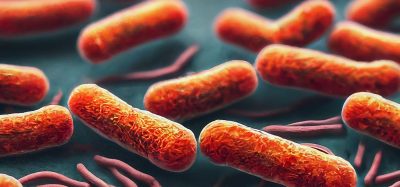Higher air pollution exposure in infancy increases peanut allergy risk in children, study finds
- Like
- Digg
- Del
- Tumblr
- VKontakte
- Buffer
- Love This
- Odnoklassniki
- Meneame
- Blogger
- Amazon
- Yahoo Mail
- Gmail
- AOL
- Newsvine
- HackerNews
- Evernote
- MySpace
- Mail.ru
- Viadeo
- Line
- Comments
- Yummly
- SMS
- Viber
- Telegram
- Subscribe
- Skype
- Facebook Messenger
- Kakao
- LiveJournal
- Yammer
- Edgar
- Fintel
- Mix
- Instapaper
- Copy Link
Posted: 23 October 2024 | Ben Cornwell | No comments yet
New research suggests tackling air pollution could reduce the prevalence of peanut allergies in infants and children.


A recent study led by the Murdoch Children’s Research Institute (MCRI) and the University of Melbourne has revealed a concerning link between exposure to higher levels of air pollution in infancy and the development of peanut allergies throughout childhood.
The research involved 5,276 children in Melbourne from the HealthNuts study, who were recruited at age one and followed up at four, six, and 10 years.
The research team used estimates of the annual average concentration of fine particulate matter (PM2.5) and nitrogen dioxide (NO2) at each participant’s residential address at the time of each follow-up.
The study, published in the Journal of Allergy and Clinical Immunology, found that infants exposed to elevated levels of air pollution had a greater likelihood of developing peanut allergies and experiencing persistent allergy symptoms throughout the first decade of life. However, the same association was not seen for eczema or egg allergy.
According to the research institute, this study marks the first time a team has linked air pollution to a proven food allergy within the first decade of a child’s life.
Insights from the study
Dr Diego Lopez from the University of Melbourne suggested that air pollution may trigger the immune system, leading to allergic reactions when it overreacts to foreign substances.
He explained, “Air pollutants have an irritant and inflammatory effect that may boost the immune system’s pro-allergic response, potentially triggering the development of food allergies.”
Despite the promising findings, Lopez acknowledged the need for further investigation to understand why air pollution primarily affects peanut allergies while seemingly leaving egg allergies and eczema unaffected.
MCRI Associate Professor Rachel Peters emphasised the significance of these findings, noting that even with Melbourne’s relatively good air quality compared to other cities, higher pollution levels still posed a risk for developing and maintaining peanut allergies.
She stated, “The rise in allergy prevalence has occurred at a similar time to increased urbanisation, leading to the belief that environmental factors may be contributing to high allergy rates.”
Peters added that while eczema and food allergies often develop in infancy and can resolve over time, some children experience persistent allergies into adolescence and adulthood.
A public health challenge
Allergies pose significant public health challenges in Australia, with an estimated one in ten children developing a food allergy within their first year of life.
Peters suggested that strategies aimed at addressing air pollution could be crucial in reducing both the occurrence and persistence of peanut allergies.
She concluded, “Improving city design to support greater air quality regulation, better promoting public transport, and switching to non-combustion fuels may help turn the tide on peanut allergy.”
Related topics
Allergens, Contaminants, Environment, Food Safety, Ingredients, The consumer
Related organisations
Murdoch Children’s Research Institute (MCRI), University of Melbourne









